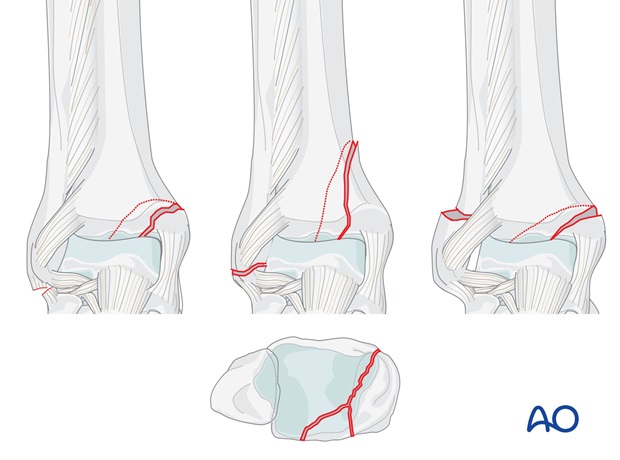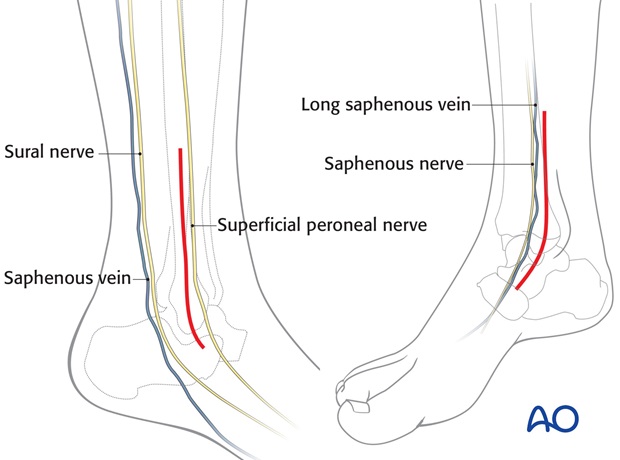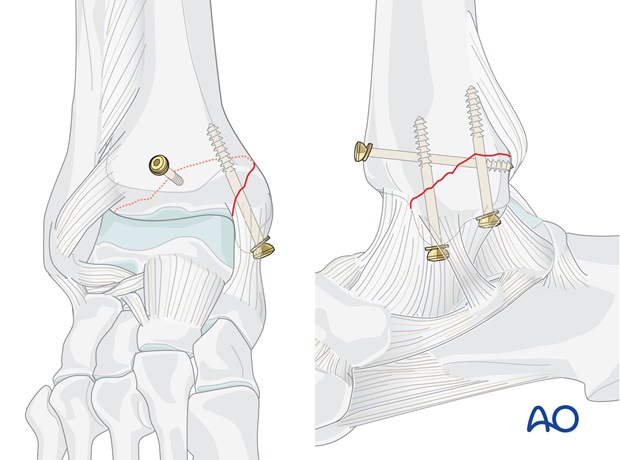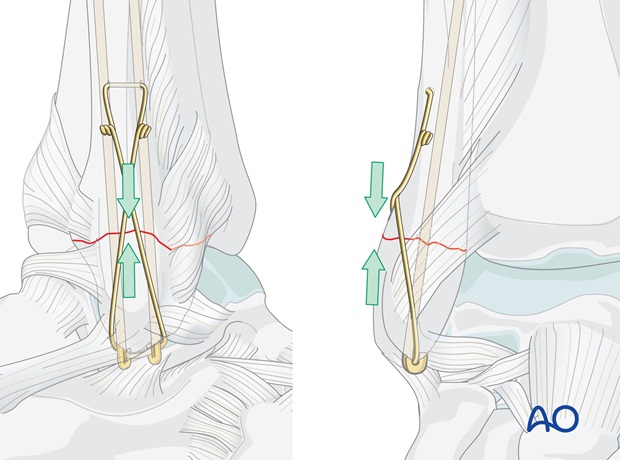ORIF
1. Principles
General considerations
As the posteromedial fracture is an intra-articular injury, it should be fixed anatomically.

Order of fixation
The choice of fixing the medial or lateral side first may be dictated by the surgeon's preference.
Choice of implant – Lateral fixation
If the distal fibular fragment is large enough, it may be held with a plate and screws from the lateral side.
If the fragment is large enough, it may be held with a plate and screws from the lateral side,
In osteoporotic bone the fixation may be more secure if locking plates are used.
Anatomic plates are available, and their lower profile may reduce postoperative discomfort due to prominent hardware.
If the fragment is too small, or there is concern about the quality of the bone, it may be better to fix it with K-wires and cerclage compression wiring.
Note: “Cerclage compression wiring” was referred to as “Tension band wiring”. We now prefer the term “Cerclage compression wiring” because the tension band mechanism cannot be applied consistently to each component of the fracture fixation. An explanation of the limits of the Tension band mechanism/principle can be found here.
Choice of implant – Medial fixation
The posteromedial fracture is fixed with lag screws.
2. Patient preparation and approaches
Patient preparation
Depending on the approach, the patient may be placed in the following positions:
Note on approaches
The two following approaches are used:
If the posterior medial fragment is large, the approach may need to be more posterior to enable reduction and fixation of this fragment.

3. Fixation
Medial fixation
The posteromedial fracture is fixed with lag screws, which should be inserted perpendicular to the planes of the fracture.

Lateral fixation
In fractures when the quality of the bone and the size of the bone are large enough for good fixation to be obtained with plate and screws, this is the preferred method of fixation.

If the fragment is too small, cerclage compression wiring can be considered.

4. Check of osteosynthesis
Check the completed osteosynthesis by image intensification.
Make sure the intra articular components of the fracture have been anatomically reduced.
Make sure none of the screws are entering the joint as shown in the X-ray. This needs to be confirmed in multiple planes.
5. Postoperative treatment of infra- and trans-syndesmotic malleolar fractures
A bulky compression dressing and a lower leg backslab, or a splint, are applied, and the limb is kept elevated for the first 24 hours or so, in order to avoid swelling and to decrease pain.
In anatomically reconstructed, stable malleolar fractures, early active exercises and light partial weight bearing are encouraged after day one. In osteoporotic bone, weight bearing should be postponed.
X-ray evaluation is made after 1 week and then monthly until full healing has occurred. Progressive weight bearing is recommended as tolerated.













